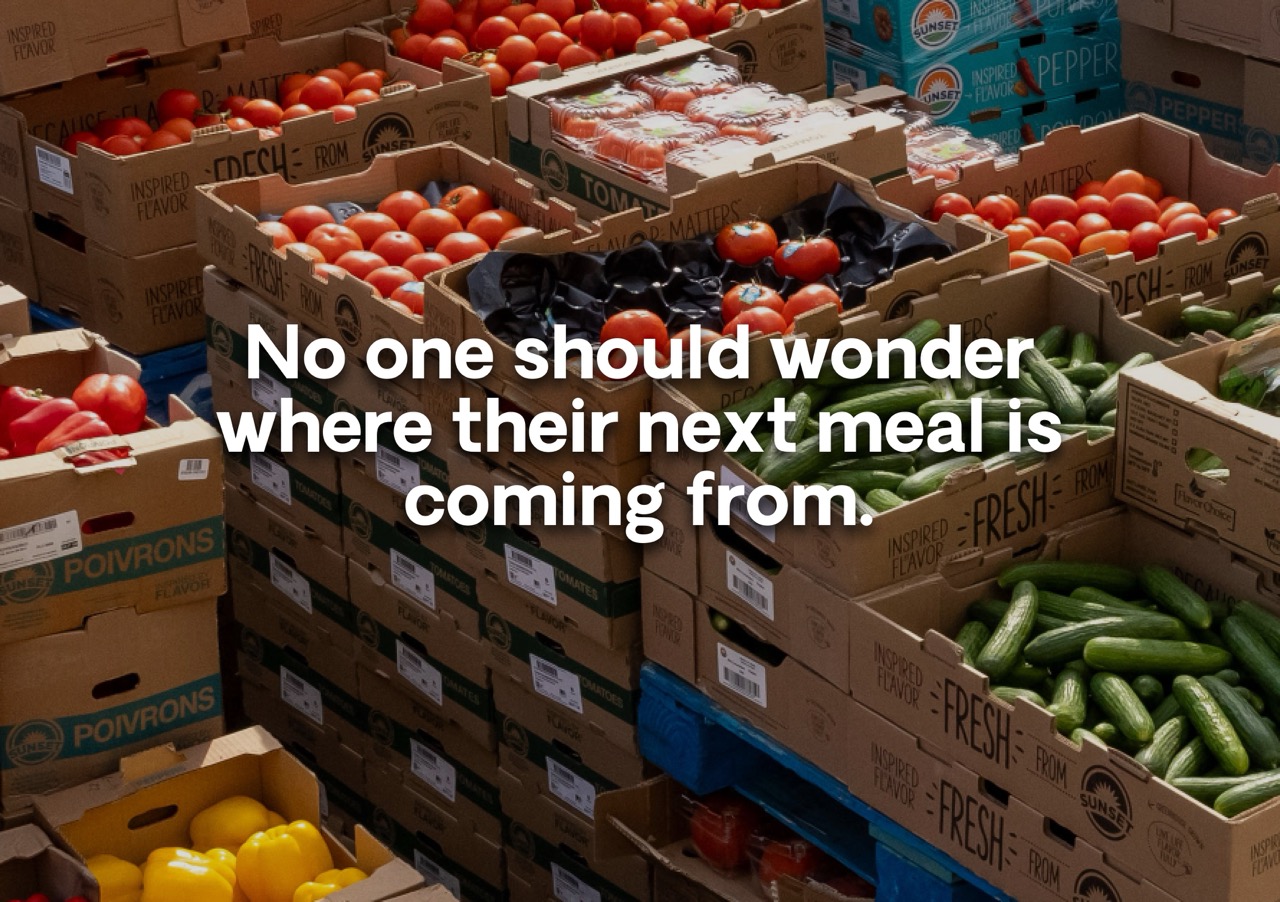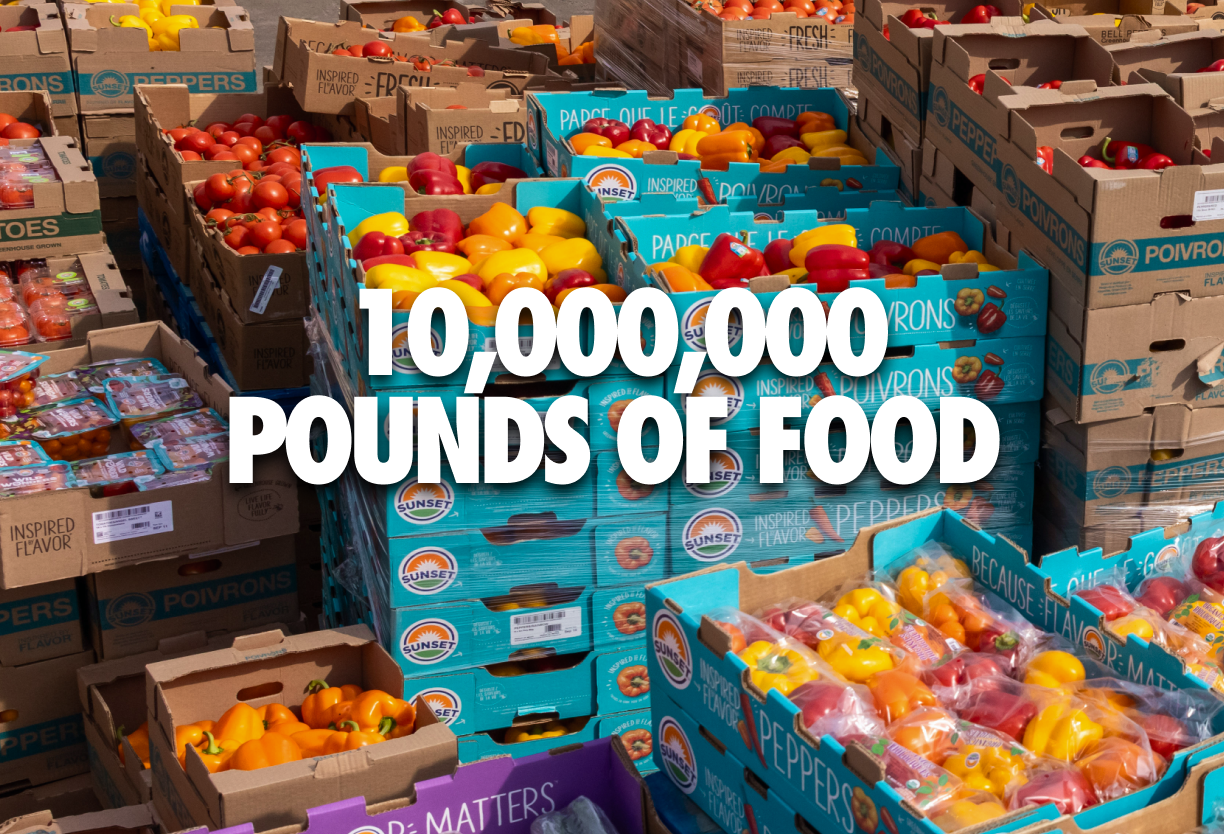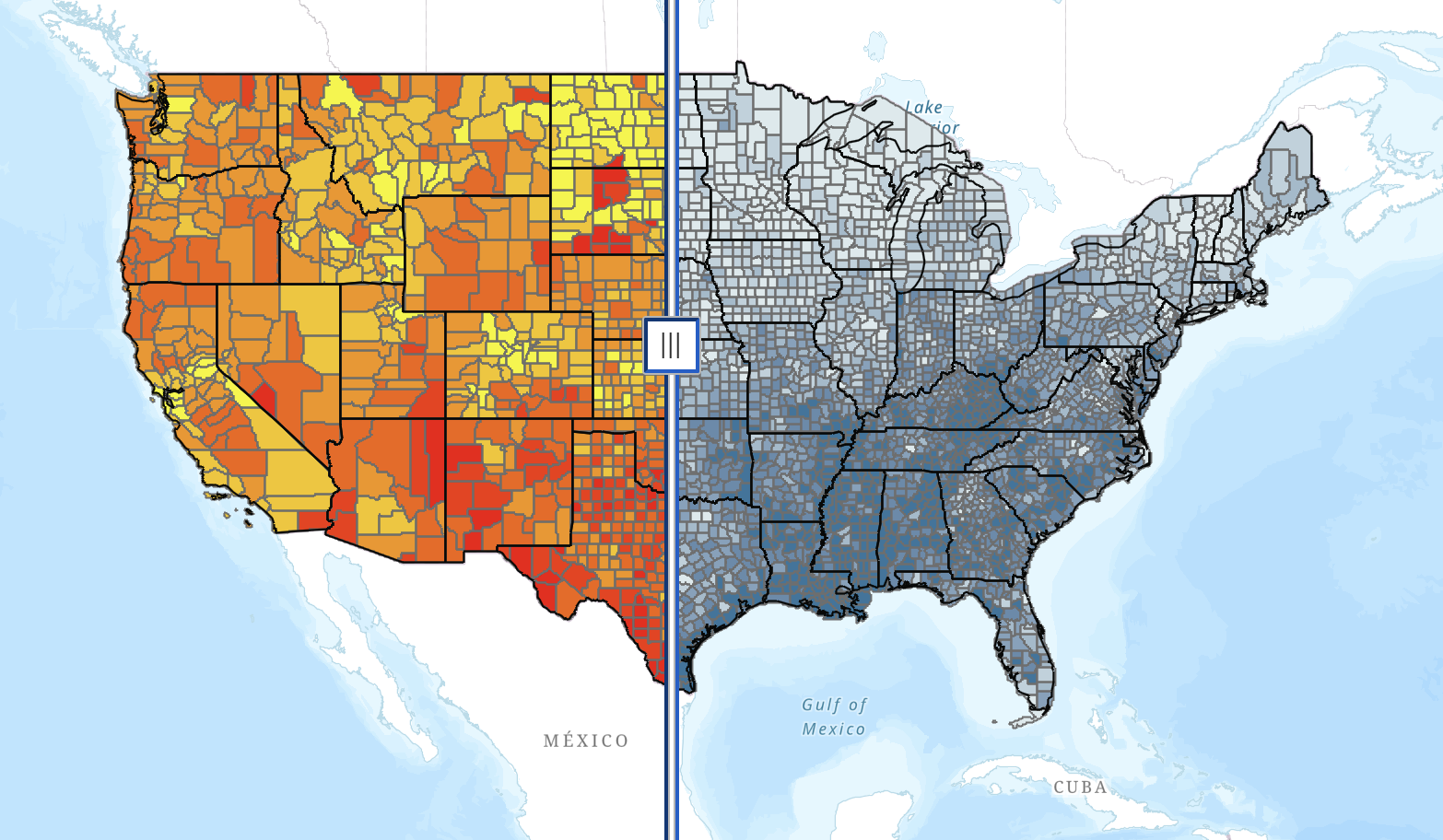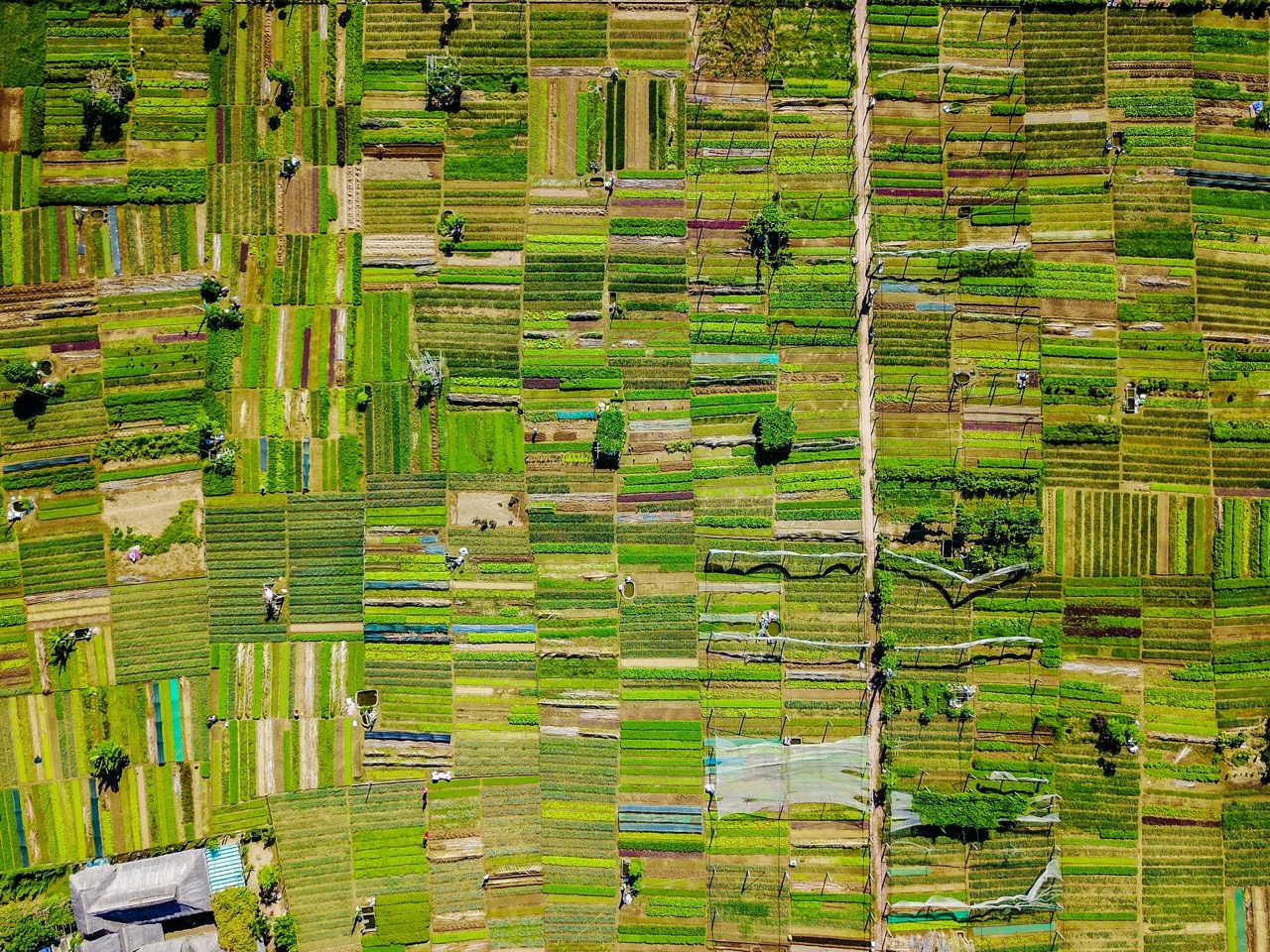The Biden-Harris Administration Just Released the Final White House Strategy for Reducing Food Loss and Waste and Recycling Organics.
Here’s What’s New, What’s Promising, and What Falls Short.
By Larkin Gallup
On June 12th, at the ReFED Food Waste Solutions Summit in Baltimore, US Secretary of Agriculture Tom Vilsack announced the release of the long-anticipated White House National Strategy for Reducing Food Loss and Waste and Recycling Organics. The strategy, born from an interagency agreement between the US Department of Agriculture, the Environmental Protection Agency, and the Food and Drug Administration, identifies actions and sets priorities to achieve the United States’s goal of reducing food loss and waste by 50% by 2030.
The strategy works to achieve four objectives:
- Prevent food loss
- Prevent food waste
- Increase the recycling rate for all organic waste
- Support policies that incentivize and encourage the prevention of food loss and waste and organics recycling.
Before we jump into what’s included in the strategy (and what’s not,) let’s take a second to trace our path to its release. This National Strategy began in 2022 with the announcement of the White House National Strategy on Hunger, Nutrition, and Health at the White House Conference on Hunger, Nutrition, and Health (the first in over 50 years!) Farmlink hosted a listening session for the conference, engaging stakeholders across the food rescue and hunger-fighting space to inform the ensuing strategy, which included a key deliverable to create another separate strategy to address food loss and waste to combat hunger.
Aligned with the national goal to reduce food loss and waste by 50% by 2030, the three agencies released a draft National Strategy in December 2023 for a two-month public comment period. During that time, Farmlink contributed to comments sent in by the Zero Food Waste Coalition as well as submitted our own comments. We urged the agencies to emphasize the hunger-fighting and environmental co-benefits of reducing food loss and waste, especially in the context of the Hunger, Nutrition, and Health “parent” National Strategy. Our comments also strongly recommended that food rescue organizations like Farmlink be called on as thought and implementation partners throughout the strategy, from expanding the network of recipients of surplus food to designing solutions to pre-retail food loss.
That brings us to mid-June when the White House officially released the final draft of the strategy—an important elevation of the strategy and its priorities. We’ve sifted through the National Strategy to find what’s new in the final version, what disappeared between drafts, and how the strategic actions will be funded (and just how feasible they are.) Here’s a detailed breakdown of exactly what you need to know about the White House National Strategy for Reducing Food Loss and Waste and Recycling Organics.
What’s new and exciting?
Let’s start with what’s new: One of the most noticeable changes is also one of the smallest: the titles of Objectives 1 and 2, which used to be Prevent Food Loss Where Possible and Prevent Food Waste Where Possible (respectively), are now Prevent Food Loss and Prevent Food Waste. While small, this edit signals a more substantial commitment to achieving a 50% reduction in FLW by identifying existing opportunities for action and creating new ones.
How Farmlink’s comments were incorporated into the National Strategy:

We were especially excited to see that, throughout the strategy, the agencies included food recovery nonprofits as solution-makers. In particular, food recovery nonprofits are highlighted as ways to improve food and nutrition security for Americans and increase the recovery and donation rate of food. Nonprofits are also increasingly included in the public-private partnerships that the strategy identifies as crucial to identifying FLW solutions throughout the supply chain.
It’s also important to point out that many definitions have been clarified, making the strategy more accurate and effective. The definition we’re most excited about is a slight tweak to organics recycling solutions: the allusion to organics recycling solutions that generate heat that can be captured and used to produce electricity or fuel has been removed. It was critical for us to point out through our comments on the draft strategy the incredibly dangerous and unjust impacts of waste incineration in America and urge the agencies to remove it as a solution. We’re celebrating its removal as a huge win for climate justice and for the fight against incineration that too often occurs in under-resourced communities and communities of color.
Another win for food donation and climate justice was the use of the EPA’s recently released Wasted Food Scale as a guiding measure to determine strategic actions and priorities. For those unfamiliar, the Wasted Food Scale ranks all food loss and waste pathways based on their environmental impacts, with prevention and then donation as the most environmentally friendly and preferred pathways and landfilling and incineration as the least preferable pathways.
.jpeg)
Farmlink’s comments included many recommendations to use the Wasted Food Scale to ensure that food donation is the top priority where possible and that incineration is never a recommended pathway. By explicitly following the Wasted Food Scale, the National Strategy can better emphasize and achieve the hunger-fighting and environmental co-benefits of reducing FLW.
Here’s what’s exciting: The new National Strategy also contains plenty of plans, definitions, and other inclusions that we’re excited about here at Farmlink. The agencies clarified the definitions of food loss and food waste while adding four terms to the Glossary: food security, food donation, indigenous food sovereignty, and nutrition security. These terms all represent tangible goals that Farmlink is working every day to elevate and achieve, and their explicit inclusion in the strategy opens the door for more meaningful action and funding to follow. A great example is the new emphasis on food sovereignty and cultural appropriateness, especially when working with Tribal Nations and indigenous communities. Not only is Indigenous food sovereignty utilized as an example to guide programs that are newly focusing on the cultural appropriateness of donated food, but the strategy’s early acknowledgment of environmental justice challenges is also influenced by the goal.
In addition to the four objectives, the National Strategy also sets guiding goals, one of which is understanding what makes achieving food security difficult for environmental justice and indigenous communities. It states that more equitable outcomes depend on identifying and overcoming these barriers, and the agencies newly acknowledged that indigenous communities tend to be located in food deserts, where there is little accessible fresh food and lacking food system infrastructure. While acknowledging food deserts does little in itself, it is a critical first step to identifying where barriers lie along racial and socioeconomic lines that can then be addressed through future actions.
Each of the four objectives also contained important changes to consider:
< Back
The Biden-Harris Administration Just Released the Final White House Strategy for Reducing Food Loss and Waste and Recycling Organics.
Here’s What’s New, What’s Promising, and What Falls Short.
By Larkin Gallup
On June 12th, at the ReFED Food Waste Solutions Summit in Baltimore, US Secretary of Agriculture Tom Vilsack announced the release of the long-anticipated White House National Strategy for Reducing Food Loss and Waste and Recycling Organics. The strategy, born from an interagency agreement between the US Department of Agriculture, the Environmental Protection Agency, and the Food and Drug Administration, identifies actions and sets priorities to achieve the United States’s goal of reducing food loss and waste by 50% by 2030.
The strategy works to achieve four objectives:
- Prevent food loss
- Prevent food waste
- Increase the recycling rate for all organic waste
- Support policies that incentivize and encourage the prevention of food loss and waste and organics recycling.
Before we jump into what’s included in the strategy (and what’s not,) let’s take a second to trace our path to its release. This National Strategy began in 2022 with the announcement of the White House National Strategy on Hunger, Nutrition, and Health at the White House Conference on Hunger, Nutrition, and Health (the first in over 50 years!) Farmlink hosted a listening session for the conference, engaging stakeholders across the food rescue and hunger-fighting space to inform the ensuing strategy, which included a key deliverable to create another separate strategy to address food loss and waste to combat hunger.
Aligned with the national goal to reduce food loss and waste by 50% by 2030, the three agencies released a draft National Strategy in December 2023 for a two-month public comment period. During that time, Farmlink contributed to comments sent in by the Zero Food Waste Coalition as well as submitted our own comments. We urged the agencies to emphasize the hunger-fighting and environmental co-benefits of reducing food loss and waste, especially in the context of the Hunger, Nutrition, and Health “parent” National Strategy. Our comments also strongly recommended that food rescue organizations like Farmlink be called on as thought and implementation partners throughout the strategy, from expanding the network of recipients of surplus food to designing solutions to pre-retail food loss.
That brings us to mid-June when the White House officially released the final draft of the strategy—an important elevation of the strategy and its priorities. We’ve sifted through the National Strategy to find what’s new in the final version, what disappeared between drafts, and how the strategic actions will be funded (and just how feasible they are.) Here’s a detailed breakdown of exactly what you need to know about the White House National Strategy for Reducing Food Loss and Waste and Recycling Organics.
What’s new and exciting?
Let’s start with what’s new: One of the most noticeable changes is also one of the smallest: the titles of Objectives 1 and 2, which used to be Prevent Food Loss Where Possible and Prevent Food Waste Where Possible (respectively), are now Prevent Food Loss and Prevent Food Waste. While small, this edit signals a more substantial commitment to achieving a 50% reduction in FLW by identifying existing opportunities for action and creating new ones.
How Farmlink’s comments were incorporated into the National Strategy:

We were especially excited to see that, throughout the strategy, the agencies included food recovery nonprofits as solution-makers. In particular, food recovery nonprofits are highlighted as ways to improve food and nutrition security for Americans and increase the recovery and donation rate of food. Nonprofits are also increasingly included in the public-private partnerships that the strategy identifies as crucial to identifying FLW solutions throughout the supply chain.
It’s also important to point out that many definitions have been clarified, making the strategy more accurate and effective. The definition we’re most excited about is a slight tweak to organics recycling solutions: the allusion to organics recycling solutions that generate heat that can be captured and used to produce electricity or fuel has been removed. It was critical for us to point out through our comments on the draft strategy the incredibly dangerous and unjust impacts of waste incineration in America and urge the agencies to remove it as a solution. We’re celebrating its removal as a huge win for climate justice and for the fight against incineration that too often occurs in under-resourced communities and communities of color.
Another win for food donation and climate justice was the use of the EPA’s recently released Wasted Food Scale as a guiding measure to determine strategic actions and priorities. For those unfamiliar, the Wasted Food Scale ranks all food loss and waste pathways based on their environmental impacts, with prevention and then donation as the most environmentally friendly and preferred pathways and landfilling and incineration as the least preferable pathways.
.jpeg)
Farmlink’s comments included many recommendations to use the Wasted Food Scale to ensure that food donation is the top priority where possible and that incineration is never a recommended pathway. By explicitly following the Wasted Food Scale, the National Strategy can better emphasize and achieve the hunger-fighting and environmental co-benefits of reducing FLW.
Here’s what’s exciting: The new National Strategy also contains plenty of plans, definitions, and other inclusions that we’re excited about here at Farmlink. The agencies clarified the definitions of food loss and food waste while adding four terms to the Glossary: food security, food donation, indigenous food sovereignty, and nutrition security. These terms all represent tangible goals that Farmlink is working every day to elevate and achieve, and their explicit inclusion in the strategy opens the door for more meaningful action and funding to follow. A great example is the new emphasis on food sovereignty and cultural appropriateness, especially when working with Tribal Nations and indigenous communities. Not only is Indigenous food sovereignty utilized as an example to guide programs that are newly focusing on the cultural appropriateness of donated food, but the strategy’s early acknowledgment of environmental justice challenges is also influenced by the goal.
In addition to the four objectives, the National Strategy also sets guiding goals, one of which is understanding what makes achieving food security difficult for environmental justice and indigenous communities. It states that more equitable outcomes depend on identifying and overcoming these barriers, and the agencies newly acknowledged that indigenous communities tend to be located in food deserts, where there is little accessible fresh food and lacking food system infrastructure. While acknowledging food deserts does little in itself, it is a critical first step to identifying where barriers lie along racial and socioeconomic lines that can then be addressed through future actions.
Each of the four objectives also contained important changes to consider:
The Biden-Harris Administration Just Released the Final White House Strategy for Reducing Food Loss and Waste and Recycling Organics.
The Biden-Harris Administration Just Released the Final White House Strategy for Reducing Food Loss and Waste and Recycling Organics.
Here’s What’s New, What’s Promising, and What Falls Short.
By Larkin Gallup
On June 12th, at the ReFED Food Waste Solutions Summit in Baltimore, US Secretary of Agriculture Tom Vilsack announced the release of the long-anticipated White House National Strategy for Reducing Food Loss and Waste and Recycling Organics. The strategy, born from an interagency agreement between the US Department of Agriculture, the Environmental Protection Agency, and the Food and Drug Administration, identifies actions and sets priorities to achieve the United States’s goal of reducing food loss and waste by 50% by 2030.
The strategy works to achieve four objectives:
- Prevent food loss
- Prevent food waste
- Increase the recycling rate for all organic waste
- Support policies that incentivize and encourage the prevention of food loss and waste and organics recycling.
Before we jump into what’s included in the strategy (and what’s not,) let’s take a second to trace our path to its release. This National Strategy began in 2022 with the announcement of the White House National Strategy on Hunger, Nutrition, and Health at the White House Conference on Hunger, Nutrition, and Health (the first in over 50 years!) Farmlink hosted a listening session for the conference, engaging stakeholders across the food rescue and hunger-fighting space to inform the ensuing strategy, which included a key deliverable to create another separate strategy to address food loss and waste to combat hunger.
Aligned with the national goal to reduce food loss and waste by 50% by 2030, the three agencies released a draft National Strategy in December 2023 for a two-month public comment period. During that time, Farmlink contributed to comments sent in by the Zero Food Waste Coalition as well as submitted our own comments. We urged the agencies to emphasize the hunger-fighting and environmental co-benefits of reducing food loss and waste, especially in the context of the Hunger, Nutrition, and Health “parent” National Strategy. Our comments also strongly recommended that food rescue organizations like Farmlink be called on as thought and implementation partners throughout the strategy, from expanding the network of recipients of surplus food to designing solutions to pre-retail food loss.
That brings us to mid-June when the White House officially released the final draft of the strategy—an important elevation of the strategy and its priorities. We’ve sifted through the National Strategy to find what’s new in the final version, what disappeared between drafts, and how the strategic actions will be funded (and just how feasible they are.) Here’s a detailed breakdown of exactly what you need to know about the White House National Strategy for Reducing Food Loss and Waste and Recycling Organics.
What’s new and exciting?
Let’s start with what’s new: One of the most noticeable changes is also one of the smallest: the titles of Objectives 1 and 2, which used to be Prevent Food Loss Where Possible and Prevent Food Waste Where Possible (respectively), are now Prevent Food Loss and Prevent Food Waste. While small, this edit signals a more substantial commitment to achieving a 50% reduction in FLW by identifying existing opportunities for action and creating new ones.
How Farmlink’s comments were incorporated into the National Strategy:

We were especially excited to see that, throughout the strategy, the agencies included food recovery nonprofits as solution-makers. In particular, food recovery nonprofits are highlighted as ways to improve food and nutrition security for Americans and increase the recovery and donation rate of food. Nonprofits are also increasingly included in the public-private partnerships that the strategy identifies as crucial to identifying FLW solutions throughout the supply chain.
It’s also important to point out that many definitions have been clarified, making the strategy more accurate and effective. The definition we’re most excited about is a slight tweak to organics recycling solutions: the allusion to organics recycling solutions that generate heat that can be captured and used to produce electricity or fuel has been removed. It was critical for us to point out through our comments on the draft strategy the incredibly dangerous and unjust impacts of waste incineration in America and urge the agencies to remove it as a solution. We’re celebrating its removal as a huge win for climate justice and for the fight against incineration that too often occurs in under-resourced communities and communities of color.
Another win for food donation and climate justice was the use of the EPA’s recently released Wasted Food Scale as a guiding measure to determine strategic actions and priorities. For those unfamiliar, the Wasted Food Scale ranks all food loss and waste pathways based on their environmental impacts, with prevention and then donation as the most environmentally friendly and preferred pathways and landfilling and incineration as the least preferable pathways.
.jpeg)
Farmlink’s comments included many recommendations to use the Wasted Food Scale to ensure that food donation is the top priority where possible and that incineration is never a recommended pathway. By explicitly following the Wasted Food Scale, the National Strategy can better emphasize and achieve the hunger-fighting and environmental co-benefits of reducing FLW.
Here’s what’s exciting: The new National Strategy also contains plenty of plans, definitions, and other inclusions that we’re excited about here at Farmlink. The agencies clarified the definitions of food loss and food waste while adding four terms to the Glossary: food security, food donation, indigenous food sovereignty, and nutrition security. These terms all represent tangible goals that Farmlink is working every day to elevate and achieve, and their explicit inclusion in the strategy opens the door for more meaningful action and funding to follow. A great example is the new emphasis on food sovereignty and cultural appropriateness, especially when working with Tribal Nations and indigenous communities. Not only is Indigenous food sovereignty utilized as an example to guide programs that are newly focusing on the cultural appropriateness of donated food, but the strategy’s early acknowledgment of environmental justice challenges is also influenced by the goal.
In addition to the four objectives, the National Strategy also sets guiding goals, one of which is understanding what makes achieving food security difficult for environmental justice and indigenous communities. It states that more equitable outcomes depend on identifying and overcoming these barriers, and the agencies newly acknowledged that indigenous communities tend to be located in food deserts, where there is little accessible fresh food and lacking food system infrastructure. While acknowledging food deserts does little in itself, it is a critical first step to identifying where barriers lie along racial and socioeconomic lines that can then be addressed through future actions.
Each of the four objectives also contained important changes to consider:
.png)
%20Large.jpeg)







.svg)
.svg)
.svg)